Nikon 1 AW1 review
-
-
Written by Ken McMahon
Intro
The first thing to say about the Nikon 1 AW1’s handling is that when it’s out of the water it neither looks, nor handles like a waterproof camera. By that I mean that it looks and feels much the same as any system camera designed for use on dry land although, as I’ve mentioned, it’s chunkier and heavier than other 1 system models. In fact, it looks and feels so much like an ‘ordinary’ camera the first time I took it into the water it was with some trepidation. Rightly so, as it turned out a faulty lens seal let in a quantity of the Atlantic Ocean leading to lens malfunction. Nikon replaced both the body and lens (though, as it turned out, the body was undamaged) and, happily, the replacement was watertight.
But this does raise some questions about the risk and the precautions needed with an interchangeable lens camera designed for use in the water. The AW1 has numerous seals but the ones that are accessible are those on the doors and lens mount. These must be kept clean from dirt and other foreign matter to remain water-tight.
On the kit zoom lens there are internal rubber seals at both ends of the zoom ring and a gasket for the protective glass front, none of which you need to worry about as they’re not accessible. The body has an O ring around the flange – the lens fits over this providing the watertight seal so it’s very important this is kept free of dirt. The manual states that lens seal needs to be replaced annually by a Nikon-authorized service representative, a service for which you’ll be charged. And if you use a non-waterproof lens on the AW1 body you first need to fit the supplied O ring protector.
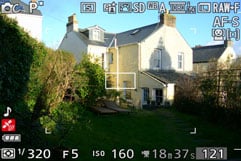 | 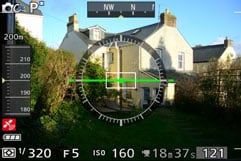 | 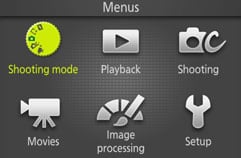 |
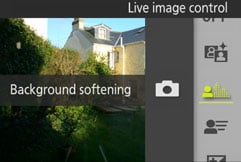 | 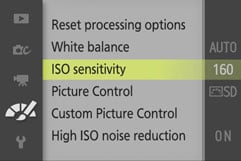 | 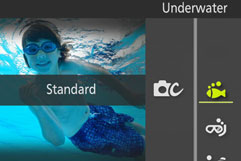 |
Obviously you won’t be changing lenses in the water, but changing them anywhere near it, on the beach for example risks getting water or sand in the camera body, though to be fair that would also be the case with a ‘normal’ camera you were using on the beach. But it’s worth thinking about the practicalities of this for a second. If you’re shooting in the water and want to change lenses you’ll not only have to get back to dry land and your other kit, you’ll need to thoroughly rinse and dry the camera and yourself (or at least your hands) before swapping the lens and re-entering the water.
At the moment you’ll only need to do that if you’ve opted for the dual-lens kit and I don’t think many people will think it worth all that effort to get the advantage of a 10mm wide angle over 11mm on the zoom (27 vs 30mm equivalent). This will become more of an issue as the waterproof lens catalogue expands, but I guess this is the price you pay for good quality interchangeable lenses on a waterproof camera. The alternatives are either a fixed lens zoom, or a conventional model with a waterproof housing, which makes lens swapping no easier and is likely to restrict the range of lenses you can use.
While we’re on the subject of housings, it’s worth noting that while the AW1 might be more expensive than waterproof compacts like the TOUGH TG-2 and Lumix FT5 / TS5, it compares very favourably with the alternative of a conventional interchangeable lens camera with a waterproof housing. When you add the cost of a Nikon waterproof housing to the Nikon 1 J3 with the 10-30mm kit zoom, for example, it’s considerably more expensive the AW1 zoom kit. There are some advantages to the waterproof housing though; the WP-N2 case is waterproof to 40 metres compared to 15 for the AW1 and with the case removed it’s smaller and lighter, plus you don’t have to fit a special ring to use any other 1 system lenses or worry about replacing O rings. On the downside, it won’t handle nearly as well in the water as the AW1, the WP-N2 housing is only compatible with the 10-300mm kit zoom and it lacks the other rugged features of the AW1, so drop it or venture into cold climates at your peril.
So how does the AW1 handle in the water? Of the three waterproof cameras I tested it was far and away the best. First off, its larger size helps you to keep a firm grip on it, though it does make it less easy to transport, you can’t stuff it inside your wetsuit like you can with the Olympus TOUGH TG-2 and the Lumix FT5 / TS5. The large zoom ring gives you plenty to hold onto with your left hand and helps keep the camera stable – as far as that’s possible when you’re floating. I was a bit disappointed that Nikon chose not to include a waterproof hand strap and doesn’t even offer an accessory. I strongly recommend you get hold of a third party strap before taking the AW1 into the sea.
The controls are easily operated with cold or gloved hands – I tried it both ways – and the Action button makes switching modes without using your fingers dead easy – you just press it with your thumb and rotate the camera until the pendulum arrow points to the mode you want. Flash settings, exposure compensation, and drive modes are available on the four-way controller and the F position provides quick access to the PASM and other creative modes. But changing ISO sensitivity, white balance or the AF area mode will still involve you in a bit of a trek through the menu system and a programmable function button would have been nice. Having said that, while the AW1 isn’t the most customisable of system cameras it strikes a good balance between simplicity and control.
Nikon 1 AW1 Sensor
The Nikon 1 AW1’s 14 Megapixel CX sensor measures 13.2×8.8mm and is comfortably larger than the 1/2.3in sensors used in the Olympus TOUGH TG-2 and Panasonic Lumix FT5 / TS5 which measures 6.16×4.62mm. The sensitivity range is 160 to 6400 ISO and the shutter speed range is 30s – 1/16000 with a bulb setitng that has a maximum 2 minute exposure limit. Images can be saved as RAW files or JPEGs at one of three compression/quality settings – Basic, Normal and Fine. 14 Megapixel Fine quality JPEGs are typically around xMB in size.
To see how the quality of the Nikon 1 AW1 measures-up in practice, take a look at my Nikon AW1 Quality and Nikon AW1 noise results pages, browse my Nikon AW1 sample images, or skip to the chase and head straight for my verdict.
The Nikon AW1 is a waterproof, freezeproof and shockproof camera based on Nikon’s 1 system, which means it’s a mirrorless system camera which uses interchangeable lenses. While there are other ‘splashproof’ compact system cameras, the AW1 is the first genuinely submersible one, allowing underwater shooting to a depth of 15 meters. It can also withstand being dropped from a height of 2 metres and can operate in temperatures down to -10C.
Launched concurrently with the AW1 are two waterproof lenses, an 11-27.5mm f3.5-5.6 zoom (30-74mm in 35mm terms) and a 10mm (27mm equivalent) f2.8 prime. These lenses can’t be used on other Nikon 1 system cameras but you can use other 1 system lenses on the AW1 although it’s obviously no longer waterproof when they’re mounted. The AW1 sports the same 14.2 megapixel CX sensor as the ‘conventional’ Nikon 1 J3, a model with which it shares many other similarities. While not as big as Micro Four Thirds or APS-C sensors, the 13.2 x 8.8mm sensor in the AW1 is significantly larger than those found in compact cameras.
When it was launched in September 2013, the AW1 took everyone by surprise, few expected the next development in the Nikon 1 series would be a waterproof model and despite the fondness with which the Nikonos waterproof models of the 60’s and 70’s are remembered, it remains to be seen if the World needs or wants a waterproof system camera. With that in mind I tested the Nikon AW1 alongside two much less expensive waterproof compacts with fixed lenses. The Olympus TOUGH TG-2 and Panasonic LUMIX FT5 are at the top end of the waterproof, rugged compact market. Read on to discover if the AW1 trumps the waterproof compacts, or whether you might be better of with something smaller, lighter, less sophisticated and, ultimately cheaper, when you go into the water.
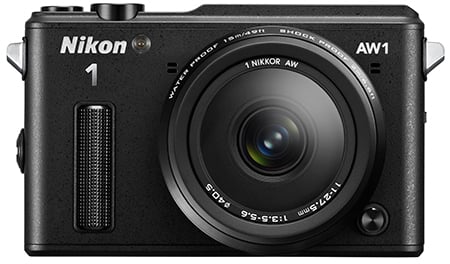
Nikon 1 AW1 design and controls
The AW1 body measures 113x72x37.5mm and weighs 356g with the battery and a card fitted. Adding the 11-27.5 kit lens extends the depth to 94mm and brings the total weight to 538g. Compare that with the Nikon 1 J3 which measures 101x61x28.8mm (61mm depth with the retracted 11-27.7mm kit lens) and weighs 307g with the kit lens attached and you get an idea of just how much additional bulk the water and shockproofing adds. Now compare that with the Olympus TOUGH TG-2 at 112x67x29.1mm and 230g or the Lumix FT5 at 109x67x28.9mm and 214g including card and battery and you can see that it’s not just a lot bigger but well over double the weight of the fixed-lens waterproof compacts. This isn’t necessarily a bad thing though as having more to hold onto in the water can actually be an advantage, but do remember the camera is likely to be performing double-duty as a model you’ll be using on the land.
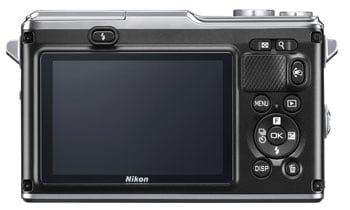
The AW1 is available in black, white or silver with the kit zoom in matching colours (though the white one has a silver zoom ring). The lens mount has a grey O-ring and the lens flange extends over and around the ring when mounted, providing the water-tight seal. Nikon recommends to replace the seals annually, yes, that’s every year. There’s a second fixed seal at the front of the lens with a plain glass cover at the front.
The other seals are on the two body compartments, one for the joint card and battery compartment, the other for the Mini HDMI and USB ports. Both of these have dual sliding latches, one to close the door and the other to lock it and both have bright yellow back panels to indicate when they’re open/unlocked.
The AW1’s controls are comparatively large and well-spaced, particularly on the top panel where the shutter release, movie record button and on/off button are all much bigger than you usually find even on DSLRs. On the rear panel the control layout is conventional with a dish-shaped four-way controller flanked by menu and playback buttons at the top with buttons for display overlays and delete below.
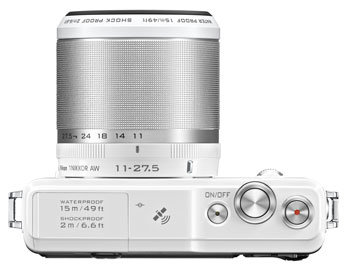
To the right of the thumb rest there’s a button you won’t find on any other 1 system camera, though. Hold down the action button with your thumb and you can access a motion-activated quick menu to select a different shooting mode. In the absence of a mode dial this is a handy feature to have at your disposal and, while the AW1 isn’t a difficult camera to operate with gloves on, it’s good to have another option.
The AW1 has a 3 inch LCD with 921 thousand dots in 3:2 proportions matching the sensor. Full resolution still images therefore fill the screen, with 16:9 HD video displayed with black bars top and bottom. The screen image on the AW1 is a little cool looking, though this obviously has no impact on image quality; other than that it provides a bright, punchy and highly detailed view. For especially bright conditions you can adjust the display brightness as well as the contrast. This actually works pretty well, improving the display visibility without blowing highlights and producing a washed out view.
When shooting at the sensor’s native shape, the AW1’s screen displays a bigger, more detailed view than either the Olympus TOUGH TG-2 or the Panasonic Lumix FT5 / TS5. Both compacts have 3 inch screens, but the TOUGH TG-2 OLED screen is 3:2 proportioned, meaning its 4:3 stills are displayed with narrow vertical black bands down either side and while the 4:3 proportions of the FT5 / TS5 match its still images, its lower 460k dot resolution isn’t as detailed.
The AW1 has a built-in flash which pops up when a button behind it on the rear panel is pressed. The flash has a Guide Number of 6.2 in metres at 160 ISO which means that it has a maximum range with the kit lens set to its full wide angle of just under 2 metres, which is pretty average. The flash has red-eye reduction, fill-flash and rear-curtain sync modes and can be used underwater, though you need to be careful that currents don’t push it back and upwards away from your subject.
The AW1 uses the same EN-EL20 battery as most other 1 system models from which you can expect 220 shots. That’s on the low to average side for comapct system cameras, but less than the 350 shots you’ll get from the Olympus TOUGH TG-2 or the 350 from the Lumix FT5 / TS5. It’s supplied with a separate AC mains charger.
The Nikon 1 AW1 has a built-in GPS receiver that tags images with positional data as well as an altimeter/depth guage. In order to work correctly you must calibrate the depth gauge by setting it to zero just before you enter the water. The GPS lat and long data, compass heading, and depth/altitude are all displayed on the same screen overlay that shows the two-axis level gauge, and all three are recorded to the EXIF data on the file. It all works very well, the GPS is reasonably quick to acquire satellites and is accurate, but the AW1 lacks the location database feature of the Olympus TOUGH TG-2, something that may or may not bother you.
Nikon 1 AW1 lens and stabilisation
The Nikon 1 AW1 is available either with the 11-27.5mm (30-74mm equivalent) f3.5-5.6 waterproof kit zoom, or with the zoom plus the 10mm (27mm equivalent) waterproof prime. The kit lens shares the same focal range and focal ratio as its non-waterproof equivalent, but is significantly bigger and isn’t retractable. It also lacks stabilisation, and though that’s unlikely to be an issue for shooting in and around water, it means the AW1 will require faster shutter speeds to avoid camera shake on the land than models with stabilisation like the TOUGH TG-2 or Lumix FT5 / TS5; it also doesn’t help that the AW1 kit zoom is optically slower than those in the Olympus and Panasonic compacts. Of course the AW1 has a bigger sensor, so bumping up the sensitivity to achieve faster shutter speeds isn’t as big an issue as it is with smaller sensor cameras, but it does erode some of the advantage of having that bigger sensor to start with. That said if you’re on dry land you could always swap the waterproof kit zoom for one of the non-waterproof Nikon 1 lenses which do have stabilisation, but ultimately it remains a shame this isn’t simply built-into the waterproof kit zoom.
Nikon 1 AW1 11-27.5mm f3.5-5.6 coverage wide | Nikon 1 AW1 11-27.5mm f3.5-5.6 coverage tele |
 |  |
| 11-27.5mm at 11mm (30mm equiv) | 11-27.5mm at 27.5mm (74mm equiv) |
Compared with the Olympus TOUGH TG-2, with its 25-100mm equivalent zoom and a maximum aperture of f2-4.9 the AW1’s kit zoom isn’t as bright and lacks the range at both the wide-angle and telephoto end of the scale. And although the Lumix FT5 / TS5 is only marginally brighter it too out-distances the zoom range of the AW1’s kit lens.
Of course, the whole point of a system camera is that you can change the lenses and as well as the waterproof 10mm (27mm equivalent) prime, you have the option of fitting any of the 1 system’s nine other lenses to the AW1. Once you do that, you forego the rugged and waterproof qualities, but this is a camera that’s designed to work as well out of the water as in and around it. Added to which, the optical quality of the Nikon lenses is undoubtedly superior to the folded optics of the compact models. And while we’re making comparisons it’s also worth noting the other big difference, which is the manually operated zoom ring, compared with rocker activated power zooms on the compacts.
On a practical note, there are also some issues around handling the Nikon 1 AW1’s lenses in and around water which I’ll talk about in the handling section towards the end of my review.
Nikon 1 AW1 shooting modes
The Nikon 1 AW1 lacks a mode dial, so shooting modes are selected from the menu. Auto mode offers point-and-shoot operation using scene detection to choose the best exposure and focus settings for five scene types – portrait, landscape, night portrait, close-up, and night landscape. Anything else gets the catch-all auto exposure settings. Largely ignored by all but novice shooters, it’s nonetheless a good option for water-based shooting. While in Auto mode, Live Image Control lets you select Active D-lighting (enhanced shadow and highlight detail), Background softening (aperture), Motion control (shutter speed) and brightness control (exposure compensation) with results previewed on screen.
Switching from Auto to the Creative menu provides PASM exposure control in addition to a range of scene modes including, as you’d expect, an Underwater mode. There’s also backlighting, Night portrait, Night landscape, Soft, Miniature and Selective colour modes as well as an Easy panorama mode on this menu. Easy panorama can shoot ‘normal’ and Wide’ panoramas that cover approximately 180 and 360 degree views; I had difficulty in getting a full 360 degree shot with the AW1 often giving up mid-pan, but as long as it’s more than half way you at least get a partial panorama. The largest image size, produced when you pan vertically (or horizontally with the AW1 held in portrait orientation) is 1536×4800 pixels for Normal and 1536×9600 for Wide.
Nikon 1 AW1 Easy Panorama |
 |
11-27.5mm f3.5-5.6 at 11mm Easy panorama original 4800 x 1536 pixels |
There are two other modes on the virtual mode dial: Motion snapshot and Best moment capture. Motion Snapshot was introduced on the first 1 system models, the J1 and V1; it captures a one second clip of 60p HD video in addition to a still shot and combines the two to a pre-selected music track, first playing the video in slow motion, then fading to the still shot. It works well with the right subjects, for example kids, animals or anything with a bit of motion, but it would be a lot better had Nikon changed the music backing options to include at least one track suited to a rugged camera likely to be used for action subjects. As it is, the four melodic piano numbers cover the gamut of likely photographic scenarios from 50th wedding anniversaries to pet funerals. Oh well.
Best moment capture also features on other 1 system cameras and uses the AW1’s fast continuous shooting capability to start buffering a sequence of frames when you half-press the shutter release. Depending on the mode, Slow view or Smart photo selector, you can either watch the buffered frames play slowly on screen and select one by firing the shutter as it displays, or have the AW1 save what it thinks are the top five frames to the card.
Fast continuous shooting coupled with quick AF has been one of the 1 system’s biggest strengths and selling points so if it’s just plain unadulterated continuous shooting you want, the AW1 can do that too. It has a top continuous speed of 15fps with AF or an impressively quick 60fps with the exposure and AF set on the first frame. There are also options at 5fps and 30fps. At the 30 and 60fps settings the maximum number of frames in a single burst is 20.
To test the Nikon 1 AW1’s continuous shooting I fitted it with a freshly formatted Sandisk 8GB UHS-1 card with a speed rating of 45MB/s. I set it to shutter priority mode, selected a shutter speed of 1/250 and chose the best quality Large Fine JPEG image setting. With the drive mode set to 15fps the AW1 fired a burst of 33 shots at exactly 15fps, capturing just over two seconds of action. The AW1 took eight seconds to finish writing to the card, though it’s possible to fire another shorter burst while this is happening.
The Nikon AW1’s continuous shooting performance is impressive compared with the 5fps for 25 frames of the Olympus TOUGH TG-2 and 10fps for 7 frames of the Lumix FT 5 / TS5. But it also compares very favourably with other mirrorless compacts and even mid-range DSLRs. Below you can see an eight-frame sequence shot in the water using the 15fps mode.
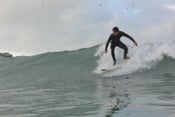 | 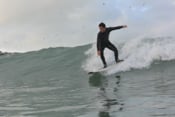 | 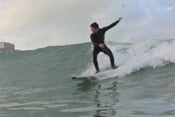 | 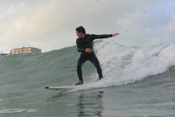 |
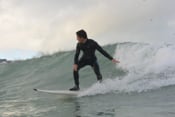 | 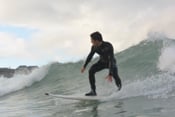 | 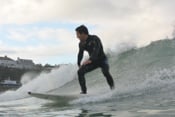 | 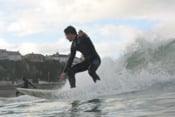 |
Nikon1 AW1 movie modes
The Nikon 1 AW1 offers a wide selection of movie modes and features and supports 1080i60 and 1080p30 HD modes in addition to 720p60 and 720p30. Video files are encoded using the H.264 codec and saved as QuickTime .mov files in the same folder as still images. 1080i60 HD video is encoded at an average bit rate of around 22Mb/s which means for each gigabyte of card space you’ll get around 6 minutes of high quality video.
The AW1 also offers a number of slow motion video modes. The highest resolution records at a frame size of 640×240 pixels at 400fps, playing back at 30fps – around 1/13th real-time speed. If you want to slow the action down even more there’s a 1200fps (1/40 realtime) option that reduces the frame size to 320×120.
To record movies with the exposure and sensitivity set automatically you simply press the AW1’s big movie record button in any mode. But select Advanced movie mode from the Shooting mode menu you can choose one of the PASM exposure modes, allowing you to change the exposure settings before and during recording. This is done using the zoom rocker, unfortunately you can just about hear the noise of the button pressing on the audio if you adjust exposure during recording.
You can also choose between single AF (AF-S) or continuous AF (AF-F) options, with the latter exploiting the phase-change AF system to track subjects with a fair degree of confidence and minimal searching. This is a key benefit of the Nikon 1 system.
Another key advantage is the ability to capture still photos while filming video. Many cameras also offer this functionality, but there’s normally a compromise between the quality of the stills or the motion of the video. Some can capture stills without interrupting the video, but they’re at the same resolution as the video itself which for 1080p is just 2 Megapixels. Others let you capture full resolution images while filming, but interrupt the video during the process. Not so with the Nikon 1 cameras which can uniquely capture high resolution still images while filming, without interrupting the video.
| |
|---|---|
| |
|
| |
|---|---|
| |
|
| |
|---|---|
| |
|
| |
|---|---|
| |
|
 The Nikon AW1 is the World's first underwater digital system camera. Based on the company's '1' mirrorless system, the AW1 can be submerged down to 15m and is also dustproof, freezeproof to -10C, and shockproof to 2m. As a Nikon 1 camera the AW1 enjoys fast continuous shooting with AF and the chance to capture HD video and stills simultaneously. It also includes built-in GPS, electronic compass, height and depth indicators and optional one-handed operation. With a bigger sensor and the chance to swap lenses, the AW1 promises a higher-end experience than a traditional waterproof compact.
The Nikon AW1 is the World's first underwater digital system camera. Based on the company's '1' mirrorless system, the AW1 can be submerged down to 15m and is also dustproof, freezeproof to -10C, and shockproof to 2m. As a Nikon 1 camera the AW1 enjoys fast continuous shooting with AF and the chance to capture HD video and stills simultaneously. It also includes built-in GPS, electronic compass, height and depth indicators and optional one-handed operation. With a bigger sensor and the chance to swap lenses, the AW1 promises a higher-end experience than a traditional waterproof compact.



